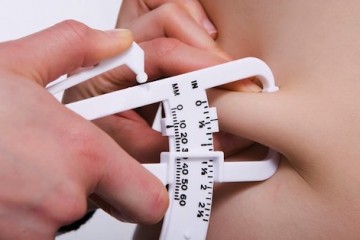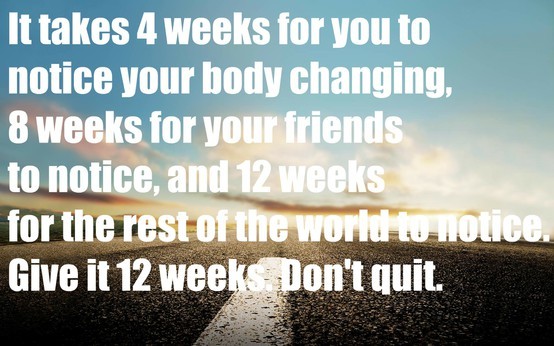12 Diet Questions Answered
One Small Fix
Your personal trainer subsists on whey shakes, your sister's sworn off dairy, and a book you picked up on barnesandnoble.com recommends watercress soup for weight loss. Is it any wonder you're stymied about what to eat come mealtime? To help you sort through the confusion, we rounded up top nutrition and weight-loss experts to answer your most burning diet questions.
Is there one small diet fix that will help me lose weight?
"Yes. Stop drinking your calories," says Walter Willett, MD, chairman of the nutrition department at the Harvard School of Public Health and coauthor of Eat, Drink and Be Healthy (Simon & Schuster, 2002). Fruit juices, coffee drinks, and regular soda are liquid calories that don't yield much satiety, says Dr. Willett. An eight-ounce regular cola contains 103 calories; the same amount of orange juice has 110. "Research also shows that we don't compensate as well for calories consumed in liquid form," says Rachel K. Johnson, PhD, RD, a professor of nutrition at the University of Vermont in Burlington. In other words, we're unlikely to eat less later to make up for these extra calories. If weight loss is your goal, opt for low- or no-calorie beverages like tea, water, seltzer and skim milk.
Control Cravings
Are there any tricks to controlling a craving?
First you need to know what's causing it. Often, plain old hunger makes us jones for a particular food. "Cravings are a normal and natural response to underfeeding yourself and can be prevented simply by planning and eating enough throughout the day," says Katherine Tallmadge, RD, author of Diet Simple (Lifeline Press, 2002). To stay satiated, she recommends eating three similarly caloric meals and one or more planned snacks daily. If the craving lingers after making this alteration, it may be emotionally based. Try distracting yourself for 20 minutes (the usual length of a craving) by chatting on the phone or taking a walk around the block, says Lawrence Cheskin, MD, director of the Johns Hopkins Weigh Management Center in Lutherville, Maryland. If distraction doesn't do the trick, Linda Spangle, author of Life Is Hard, Food Is Easy (Lifeline Press, 2003), says you might have "head hunger." Identify the food you're yearning for: Is it chewy/crunchy or smooth/creamy? If it's the former, there's a good chance that you're angry, anxious, frustrated, stressed or resentful. Ask yourself, What do I want to chew on in life right now? Spangle associates a yen for smooth/creamy foods with "empty emotions" like loneliness, sadness or a lack of recognition. Ask, What am I missing in my life at this moment? Whatever the answer, follow up with the bigger question: Will food get me what I need? Once you realize that eating won't resolve your problem, you can focus on what's really eating you.
I Love Fast Food
I love fast food, but I'm trying to eat more healthily. What things should I avoid?
Eighty-six the cheeseburgers, fried chicken, fried-fish sandwiches, french fries and meat-topped pizzas, says Michael Jacobson, PhD, executive director of the Center for Science in the Public Interest in Washington, D.C., and coauthor of Restaurant Confidential (Workman, 2002). One slice of Pizza Hut's Pan Pizza with Italian sausage packs 320 calories and 20 grams of fat; Burger King's Double Whopper with Cheese weighs in at 1,070 calories and 70 grams of fat. But if, alas, your belly's aching for the Golden Arches, control your portions by ordering a small grilled sandwich sans the cheese and sauce but with extra lettuce and tomatoes. Can't live without pizza? "Opt for thin crust and vegetable toppings and you'll save more than 100 calories," says Hope Warshaw, RD, author of Eat Out, Eat Right (Surrey Books, 2003).
Salt Habit
Do I need to cut back on salt if I don't have high blood pressure?
It couldn't hurt. A high-sodium habit has also been associated with osteoporosis; taking in more than 3,000 milligrams daily may interfere with calcium absorption, which can weaken bones over time. And according to the National Heart, Lung and Blood Institute, most women consume 15 to 40 percent more than the recommended 2,400 milligrams of sodium per day (the equivalent of about one teaspoon of table salt). To limit your intake, cut down on popcorn and cookies, frozen dinners, canned soups and broths and bottled salad dressing.
Lower Triglycerides
My triglycerides were high at my last checkup. How can I lower them?
Triglycerides are simply a form of fat. "They are as important as high cholesterol [another type of fat] in women," says Noel Bairey Merz, MD, medical director of the Women's Health Program and Preventive Cardiac Center at Cedars-Sinai Medical Center in Los Angeles. Left unregulated, these fats can contribute to atherosclerosis, a condition in which artery walls become thicker and less elastic. When a blood test indicates that triglyceride levels are high (over 150 mg/dl), it's a tip-off that they're hovering in the bloodstream instead of being stored in the body for energy. Losing weight, reducing alcohol consumption, quitting smoking and exercising regularly can all help lower triglyceride levels.
Sweet Cravings
I find it impossible to stop eating a sweet after just a bite or two. Any tips?
Um, pour pepper over the rest and then step on it? Seriously though, willpower is about timing. It's best to eat treats when you're full-say, at the end of a meal-so you'll be less tempted to binge. "Using sweets like chocolate to alleviate hunger can actually create a craving for that food," says Barbara Rolls, PhD, a nutrition professor at Pennsylvania State University and coauthor of The Volumetrics Weight-Control Plan (Harper Torch, 2003). Your brain gets the message that sweets hit the spot and remembers it the next time you're hungry.
Organic Nutrition
Are organic foods more nutritious?
Possibly. Whether foods are produced organically (without pesticides, herbicides and chemical fertilizers) or conventionally, "they generally contain the same kinds and amounts of vitamins and minerals," says Mary Lee Chin, RD, owner of Nutrition Edge Communications in Denver. However, a recent study published in the Journal of Agricultural and Food Chemistry found organic corn and strawberries to have higher levels of phenolic metabolites, or disease-fighting antioxidants. It seems that the fertilizer used to produce conventionally grown foods may be enough to disrupt a plant's metabolite production.
Restaurant Tricks
Any strategies I can use so I won't gain weight when I eat out?
Thanks to supersize portions and the liberal use of tasty fats like butter and cream, restaurant meals can wreak havoc on a diet. But you can rein in the calories by developing some ironclad policies, says Cathy Nonas, RD, director of diabetes and obesity programs at North General Hospital in New York City. For instance, you might decide that you'll eat just half of your entree when you go to American and French restaurants, and a salad and half order of pasta when you're out for Italian. In Chinese restaurants, your policy might be to share one steamed entree and one other dish with a friend. Other helpful tips: eat two appetizers (one should be low-calorie) instead of an entree, allow yourself a glass of wine if you pass on the bread basket, and always order sauces and dressings on the side. To increase the chances that you'll adhere to these guidelines, make sure you take into account what's most important to you. If you really love dessert, for example, your dining-out policy should reflect that.
Foods That Make You Gain Weight
Are there some foods that contribute to weight gain more than others?
No matter where the calories come from, consuming more than you burn will eventually cause you to gain weight. Some foods are easier to overeat, however. High-energy-density foods, those that have a low fiber or water content, take up relatively little stomach space, so you may find yourself consuming greater quantities, says Dr. Cheskin. In this category: white pasta, meats, cheese and cookies. Since some of these foods provide other nutrients, you needn't purge them from your pantry. Instead, try to concentrate on eating more low-energy-dense foods (fruits, vegetables, broth-based soups, salads and whole-grain cereals with low-fat milk) and you'll fill up on fewer calories, says Rolls.
Superfoods for Weight Loss
Are there any superfoods I can have that aid weight loss?
"Dairy foods like skim milk and low-fat yogurt top the list," says Michael Zemel, PhD, a professor of nutrition and medicine at the University of Tennessee in Knoxville. In a study of 34 otherwise healthy obese adults, those who consumed three servings of light yogurt (for a total of 1,100 milligrams of calcium) daily lost 22 percent more weight and 61 percent more body fat than those on a low-dairy (500 milligrams of calcium) diet. Zemel explains that a high-calcium diet-1,200 milligrams per day-inhibits the production of calcitriol, a hormone that "tells" cells to generate more fat. Conversely, more calcitriol is released on a low-calcium diet, resulting in bigger, plumper fat cells. But supplements alone won't suffice; you need to consume dairy foods. "Bioactive compounds in milk, yogurt and cheese work with calcium to nearly double the effectiveness of fat burning and weight management," says Zemel.
Diabetes Concerns
Diabetes runs in my family. Should I steer clear of sweets?
If you're overweight and don't exercise regularly, yes. Limit your intake of simple carbohydrates, such as cookies, cakes, power drinks and soda, says Fran Kaufman, MD, immediate past president of the American Diabetes Association. These foods can cause blood sugar to rise rapidly and prime the pancreas to release insulin. Over time, the consistent release of this hormone can pave the way for type 2 diabetes, a condition in which the pancreas doesn't make enough insulin and the body's cells don't respond properly to the insulin produced. To prevent or delay the onset of this disease, lose weight if you need to and work out regularly, says Dr. Kaufman. Exercise helps metabolize excess circulating blood glucose; weight loss helps your body use insulin more efficiently.
Caffeine Please
I'm a java junkie! How much caffeine is too much?
Are you feeling jittery or experiencing insomnia or heartburn? If so, you may want to go easy on the joe. "On average, most adults will notice no side effects from caffeine at 300 milligrams or fewer a day," says Herbert Muncie Jr., MD, chairman of the department of family medicine at the University of Maryland School of Medicine in Baltimore. That's the caffeine equivalent of roughly 28 ounces (or three and a half cups) of regular coffee. If you're pregnant or trying to conceive, "reduce your intake to one caffeinated beverage a day," says Lisa Mazzullo, MD, an assistant professor of obstetrics at Northwestern University Feinberg School of Medicine in Chicago and coauthor of Before Your Pregnancy (Ballantine, 2002). Consuming too much caffeine may increase your risk of low birth weight or miscarriage.
-
Key Tips For Weight Loss
Weight loss becomes something very important for most people nowadays
-
Excellent Tips To Help You Kick Start Your Weight Loss
TIP! Caffeine should also be avoided. According to research,
-
What is circuit training
What is circuit training? Hot, is the best answer I can give you
-
Raspberries: Nature’s new fat burner?
Raspberries are famous for their substantial amount of vitami
-
See How You Can lose Belly Fat Without Exercise
Belly fat is the fat tissue situated around the abdominal organs. Exc
-
Hip Replacement Surgery Helped This Woman Lose 45 Pounds—And Changed Her Life
Debbi Segina was only 55 when chronic hip problems made it impossible
- DON'T MISS
- Effectively Lose Weight With These Easy Tip
- Sugar Challenge Tips and Tricks
- How to Lose 10 Pounds in 2 Weeks
- Here Are 2 Major Weight Loss Secrets They Are Trying to Hide From Us
- Fight Fat With These Weight Loss Tips
- Get Your Best Body With These Weight Loss Ideas
- Will working out on an empty stomach help me lose weight? (Query)
- Weight Loss Tip #53: Do squats to burn lower body fat!
- How To Calculate Your Bmr
- Weight Loss-Is It Too Hard or Easy?




